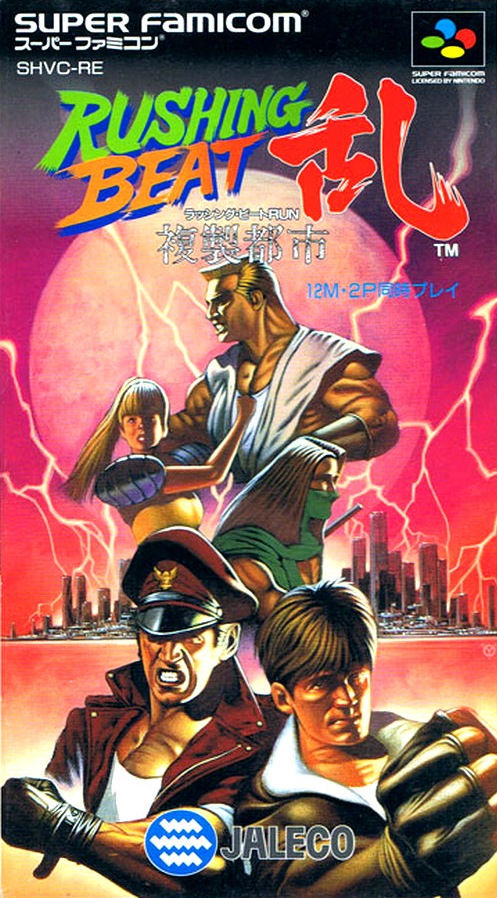Overview

Brawl Brothers (known in Japan as either Rushing Beat Ran: Fukusei Toshi, loosely translated to "Replica City", or Rushing Beat Run, and known in Europe as Brawl Brothers: Rival Turf! 2) is a belt-scrolling beat-'em-up developed and published by Jaleco for the Super Nintendo Entertainment System in December 22, 1992 for Japan, in March 11, 1993 for North America, and in 1993 for Europe.
A standard beat-'em-up in the vein of Capcom's Final Fight, Brawl Brothers builds on its predecessor Rival Turf with redrawn graphics, updated gameplay, additional playable characters (five in all), and a new sci-fi inspired story (involving cybernetic clones). Along with the protagonists from the previous game (street brawler Rick Norton, now known as "Hack" in the English version, and police officer Douglas Bild, now known as "Slash" in the English version), the game includes three new playable characters: professional wrestler Wendy, ninja Kazan, and judoka Lord J.
The game's story takes place in Bayside City (Neo-Cisco in the Japanese version), where three members of the local martial arts gym have been kidnapped by a gang of cybernetic clones. The remaining two members must infiltrate the gang's headquarters, rescue their kidnapped allies (defeating their clones in the process), and foil the plans of the gang's leader: the mysterious Dieter (Iceman in the Japanese version).
Much of the gameplay is the same as in Rival Turf (including the signature Angry Mode system), with some new techniques (such as breaking out of holds and attacking enemies on the ground), a revamped running system (which now correspond to double-tapping left/right on the D-Pad), and an updated Special Attack system (which now depletes player health, rather than score). One notable aspect of the game is that the full Japanese version is included in the English version's cartridge, accessible through the use of a cheat code.
The game later received a sequel, with The Peace Keepers. It also received a digital re-release as a Virtual Console title, first for the Wii in 2011, then for the Wii U in 2013. It was later included in the Super Nintendo Entertainment System - Nintendo Switch Online service as a launch title on September 6, 2019.
Stages
Unlike the previous game, the boss opponents for the first three stages are not original opponents, but rather correspond to each of the clones of the three player characters that didn't get selected at the start of the game, at random. The final boss is Dieter (Iceman in the Japanese version), the leader of the cloning project.
- Bay Side -> Drain
- Training Field -> Air Terminal
- Roofs -> Airshed
- Adler
Log in to comment